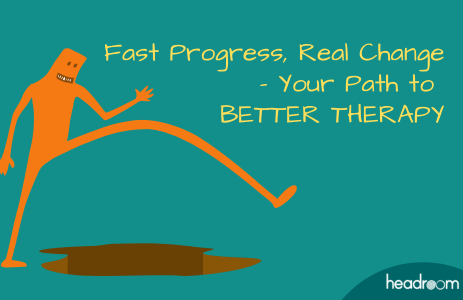Artistic careers can be deeply fulfilling, but they often come with unique pressures that can take a toll on mental health. As young visual artists in South Africa, we often find ourselves overwhelmed by the pressures and uncertainties that come with pursuing a creative career. From financial instability to creative burnout, the demands of being an artist can create significant stress and anxiety. Understanding these challenges can empower us to manage them effectively, allowing us to thrive in our art and career. In this article, we’ll explore the top 12 career challenges that cause stress and anxiety for visual artists, backed by expert research and practical tips.
12 Aspects of Creative Work Causing Stress and Anxiety for Visual Artists
1. Creative Blocks
Creative blocks can be incredibly frustrating. As artists, we often feel pressured to create continuously, but when the inspiration dries up, stress follows. According to psychologist Dr. Csikszentmihalyi, finding a state of “flow” can help artists overcome these mental barriers and return to their creative process.
2. Perfectionism
Striving for perfection can lead to burnout. It’s common for us to set impossibly high standards for ourselves, which can result in dissatisfaction and stress when we feel our work doesn’t measure up. Learning to accept that “perfect” doesn’t exist is key to maintaining a healthy mindset.
3. Financial Insecurity
Many visual artists struggle with irregular income streams, contributing to stress and anxiety. Financial instability, compounded by the challenge of pricing work fairly, often forces artists to balance multiple jobs or freelance gigs to make ends meet.
4. Fear of Rejection
Whether it’s gallery submissions, client commissions, or social media posts, rejection is an unavoidable aspect of being an artist. Constant fear of rejection can make us doubt our abilities and hinder our growth. However, according to Brené Brown, facing vulnerability is essential for creativity.
5. The Pressure to Stay Relevant
In a fast-paced world where trends change quickly, we may feel pressured to adapt our style to stay relevant. This pressure can conflict with our artistic identity, leading to stress and dissatisfaction.
6. Marketing and Self-Promotion
Visual artists are often expected to manage their own marketing. Navigating social media, building a portfolio, and networking can feel overwhelming, especially for those of us who may be introverted or uncomfortable with self-promotion.
7. Isolation and Loneliness
Art can be a solitary pursuit, which may lead to feelings of loneliness and social isolation. Without a strong support system, this isolation can contribute to mental health issues like anxiety and depression.
8. Lack of Career Stability
Many artists struggle with inconsistent job opportunities, making it difficult to maintain long-term career stability. The unpredictable nature of the art market means many of us worry about our futures, creating long-term anxiety.
9. Criticism and Judgment
Receiving criticism is part of being an artist, but negative feedback can impact our self-esteem. While constructive feedback can help us grow, harsh or unfounded criticism can cause stress, making us question our value as artists.
10. Work-Life Balance
With the freedom to set our own schedules, it’s easy for us to blur the lines between work and personal life. Overworking and not setting clear boundaries can lead to burnout.
11. Navigating Collaborations
Working with galleries, clients, and other artists requires negotiation and collaboration, which can be challenging. Miscommunications or creative disagreements can lead to tension, making collaborations stressful.
12. Impostor Syndrome
Many young artists experience impostor syndrome—the feeling that we’re not truly talented and that any success is undeserved. This mental trap can lead to chronic anxiety and self-doubt.
Common Struggles
While these career challenges are universal among artists, how we experience and cope with them varies. One of the most common struggles is feeling overwhelmed by the need to constantly create without adequate support or guidance. Financial insecurity also frequently leaves many of us feeling stuck in survival mode, preventing us from fully exploring our creative potential. We must acknowledge these struggles, as addressing them is the first step to finding long-term solutions.
How Coaching, Counselling, and Therapy Can Help
Coaching, counselling, and therapy offer essential support in managing the stress and anxiety that come with an artistic career. Mental health professionals excel in communication and emotional intelligence, allowing them to help artists navigate interpersonal and intercultural differences within the creative space.
- Counselling can provide strategies to deal with stress, manage criticism, and improve self-confidence.
- Coaching can assist with career planning and goal setting, ensuring we find a healthy work-life balance.
- Therapy is vital for those of us dealing with anxiety, depression, or impostor syndrome. Therapists can guide us through processing rejection, perfectionism, and financial fears in a way that promotes mental well-being.
Seeking help from a professional is not a sign of weakness but rather a powerful step toward improving our mental health and career.
Tips for Managing Career Challenges
To effectively manage these challenges, we need to focus on creating sustainable routines. Here are some expert-backed tips to help us cope:
- Set Boundaries: Establish clear work-life boundaries to avoid burnout.
- Build a Support System: Connect with other artists or seek mentorship for advice and emotional support.
- Invest in Your Mental Health: Regularly check in with a mental health professional for guidance on managing stress.
For Your Reflections
If you’ve been struggling with the pressures of being a visual artist, you’re not alone. Subscribe to our newsletter for more mental health tips, or join one of our upcoming webinars designed specifically for young artists in South Africa. You can also book a private session to discuss your personal challenges and learn how to navigate your creative career with the support you deserve.
References
Brown, B. (2012). Daring Greatly: How the Courage to Be Vulnerable Transforms the Way We Live, Love, Parent, and Lead. Penguin.
Csikszentmihalyi, M. (1996). Creativity: Flow and the Psychology of Discovery and Invention. HarperCollins.




